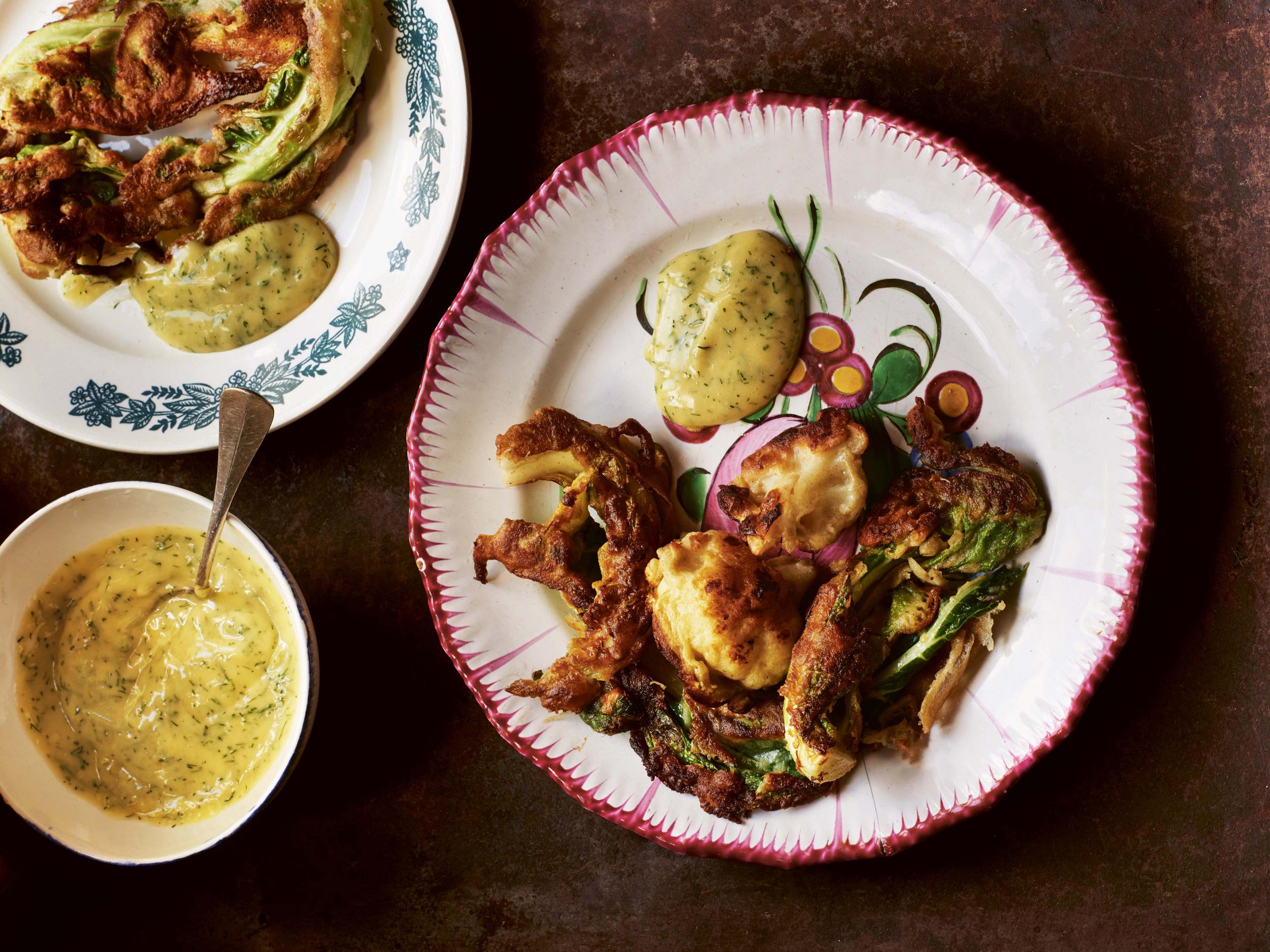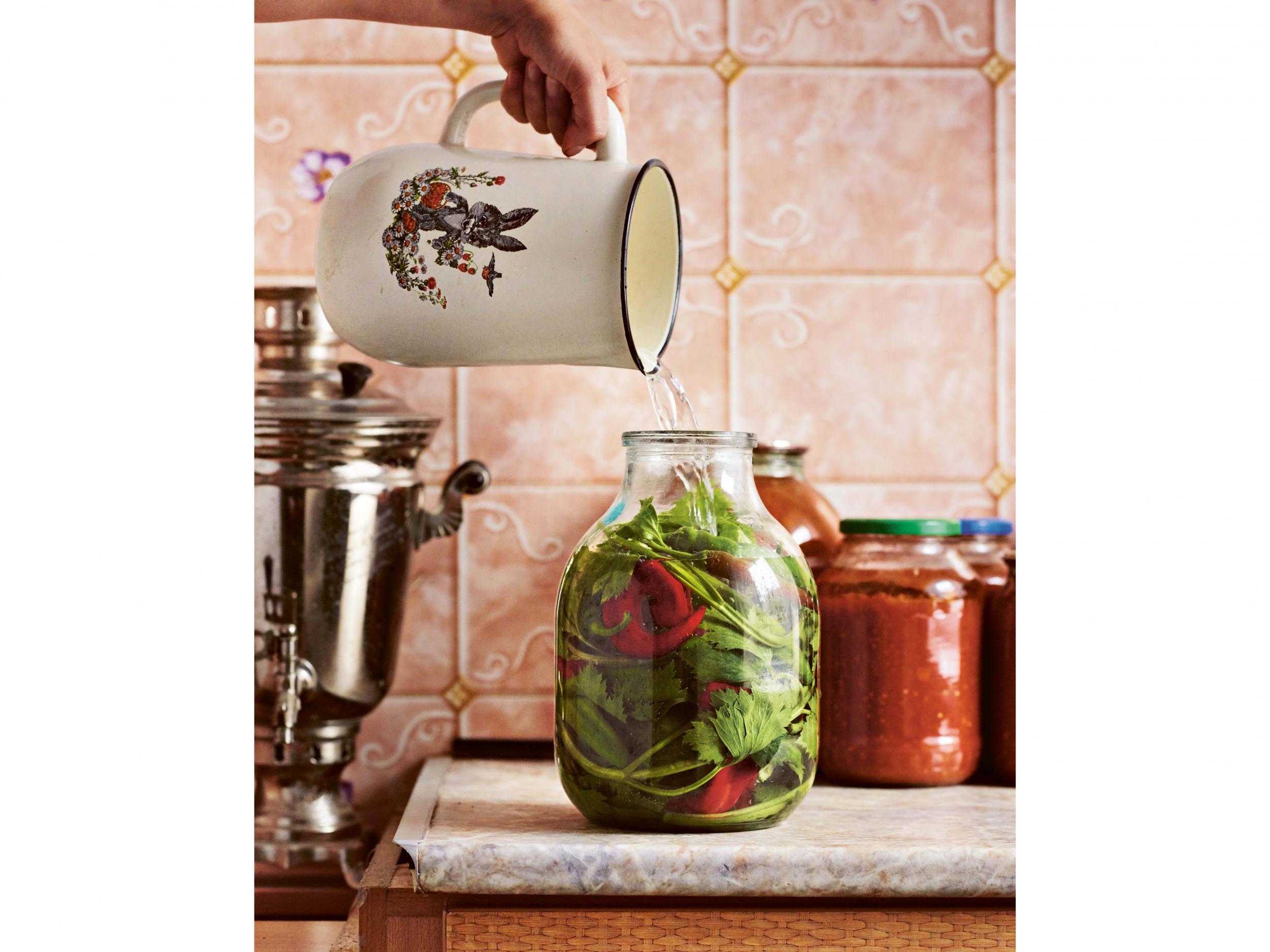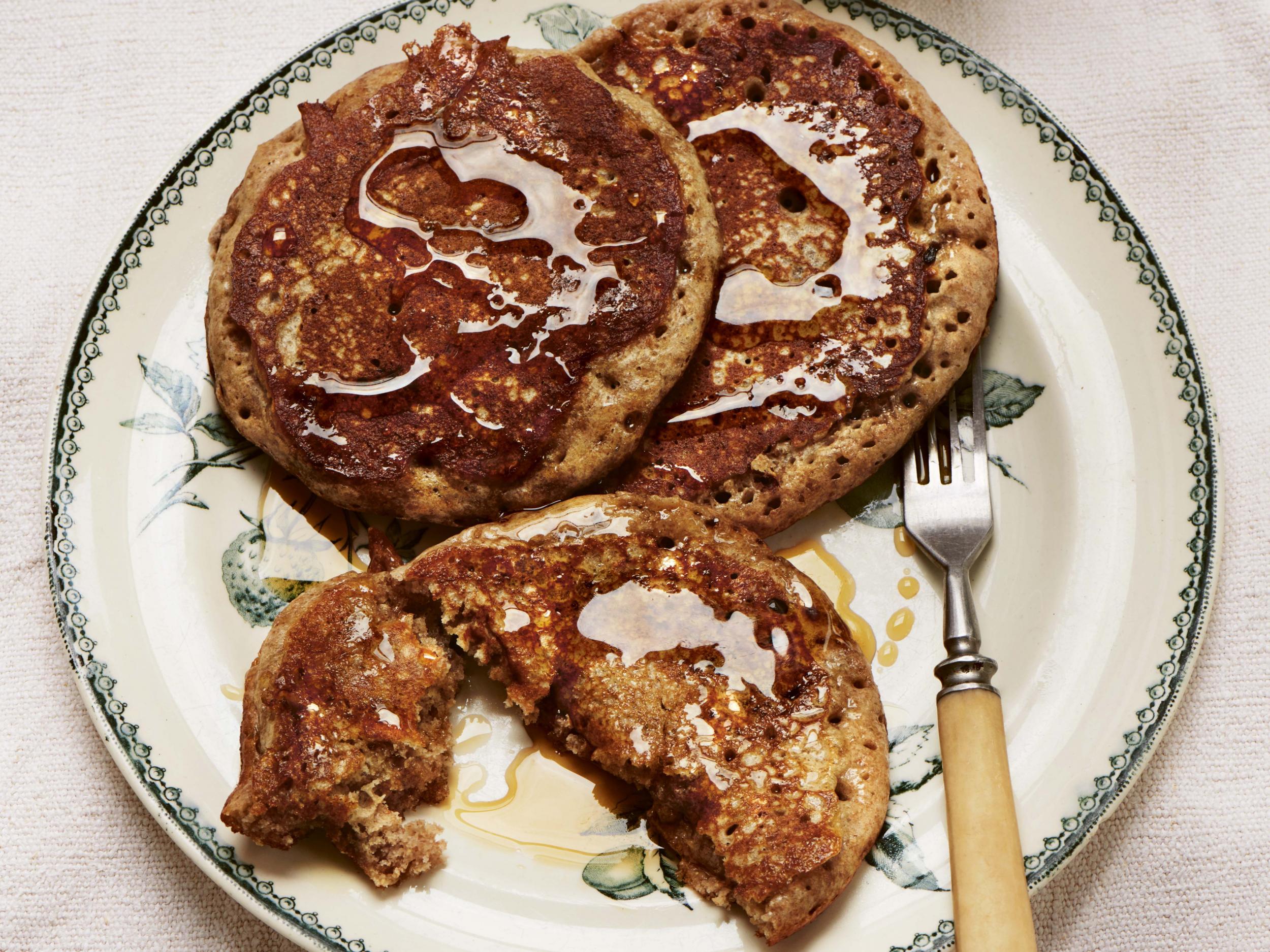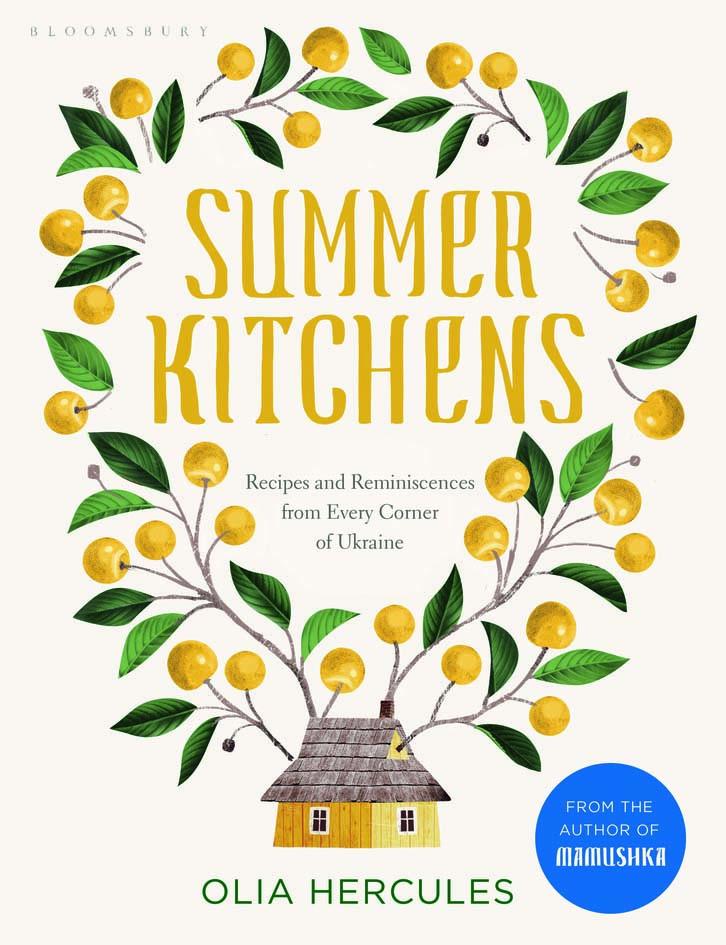'Summer Kitchens' cookbook: Recipes from cauliflower fritters to buckwheat drop scones
Inspired by the traditional Ukrainian outhouses where people cooked during the warmer months, Olia Hercules’s third book is about seasonal flavours and local produce

Your support helps us to tell the story
From reproductive rights to climate change to Big Tech, The Independent is on the ground when the story is developing. Whether it's investigating the financials of Elon Musk's pro-Trump PAC or producing our latest documentary, 'The A Word', which shines a light on the American women fighting for reproductive rights, we know how important it is to parse out the facts from the messaging.
At such a critical moment in US history, we need reporters on the ground. Your donation allows us to keep sending journalists to speak to both sides of the story.
The Independent is trusted by Americans across the entire political spectrum. And unlike many other quality news outlets, we choose not to lock Americans out of our reporting and analysis with paywalls. We believe quality journalism should be available to everyone, paid for by those who can afford it.
Your support makes all the difference.Cauliflower fritters
A simple batter is used all over Ukraine for frying all sorts of things, from chicken or pork schnitzel to whole river fish.
I love vegetables fried in this way, and cauliflower is especially good. Normally, plain white flour is used, but buckwheat flour was a popular choice in the past and I tend to use it instead of wheat flour – it is healthier and much more flavoursome.
You can use the batter in this recipe for vegetables other than cauliflower. Normally the fritters are eaten just as they are, but I like them with a spoonful of dill-and-garlic-spiked mayo.
If you come across some good-quality chipotle mayo, that wouldn’t go amiss either.
Serves 4
1 small cauliflower
Vegetable oil, for frying
1 egg, beaten
100ml whole milk
60g buckwheat or plain flour
Sea salt and black pepper
Dill and garlic mayonnaise
150g mayonnaise
1 garlic clove, finely grated
Handful of finely chopped dill
Cut the cauliflower into small florets, keeping any sprightly smaller leaves too. Blanch the cauliflower and its leaves in a pan of boiling, salted water. Take the leaves out after about 2 minutes, and the florets after 5 minutes. Refresh both in cold water, then drain well and pat dry with kitchen paper.
Heat 4tbsp of oil in a large frying pan over a medium heat: it should cover the base of the pan; if not add a little more.
If you are using buckwheat flour, make the batter just before you are ready to fry as it becomes gloopier by the minute. In a bowl, whisk the egg with the milk, then add the flour and whisk until smooth. Season well with salt and pepper.
Drop four pieces of cauliflower into the batter bowl at a time, making sure they are all thickly coated.
When the oil is really hot, bring the bowl over to the pan (otherwise everything will get super-messy!) and pop the batter-coated pieces of cauliflower into the pan. Depending on the size of your pan, you should be able to fry between 4 and 8 fritters at a time. When they are golden all over, drain on kitchen paper. You might need to wipe out the pan with kitchen paper and add more oil in-between batches.
For the dill and garlic mayonnaise, simply combine all the ingredients in a small bowl.
Serve the cauliflower fritters with the garlic-spiked dill mayo.

Fermented chillies
This is one of the easiest and most satisfying ferments to make. Traditionally, long red chillies are used, but if you can get hold of them, fruity habaneros are fantastic. You can add whatever flavourings you like: lovage or celery leaves work well, as do sliced garlic cloves and the stronger tasting soft herbs, such as tarragon.
When the chillies are ready, the skins will be quite tough to eat, so I like to squeeze out the beautifully soft and fizzy flesh and blitz it into a paste in the blender.
It is then excellent used as a condiment, or to spike up a rich winter borsch, split pea soup or some spelt dumplings; this summer, my husband mixed a spoonful with some yoghurt to dress a slaw. Do play around and get creative with it: think relishes and salsas, curries and stews, marinades for grilled meat, fish and vegetables – the possibilities really are endless.
Makes enough to fill a 2l jar
20g sea salt
20 red or green chillies
200g celery and/or lovage leaves, washed
1 celery stick, if needed
Pour 1 litre of water into a saucepan, add the salt and bring to the boil, stirring to dissolve the salt. Switch off the heat, then leave the brine to cool down to room temperature.
Put the chillies and leaves into a sterilised 2l jar with a lid, then pour in the brine, making sure everything is completely covered. If the chillies bob up again, wedge a spare celery stick across the neck of the jar to keep them submerged.
Cover with the lid and leave at room temperature for a few days, lifting the lid from time to time to release any fermentation gases. When you notice the brine becoming playfully fizzy, transfer the ferment to the fridge, where it will keep for many months, slowly getting more intensely sour and spicy.

Buckwheat drop scones
I have come across a myriad of old Ukrainian recipes that use a natural sourdough leaven called opara to make pancakes, and buckwheat flour also featured in many of them. Zinoviya Klynovetska, one of Ukraine’s pioneering food writers, has a recipe for what she calls lyapuny, or buckwheat flour pancakes, in her seminal 1913 Dishes and Drinks of Ukraine. These drop scones were partly inspired by that recipe and partly by British pikelets, cousins of the crumpet. If you want to make them the traditional way, you’ll have to mix the batter the day before, as the sourdough needs to ferment overnight.
Serves 4-5 (Makes 8-10 drop scones)
100g rye starter or 4g fast-action dried yeast
100g buckwheat flour
100g strong white bread flour
150ml whole milk
150ml lukewarm water
½tsp bicarbonate of soda
1tbsp honey
½tsp sea salt
2-3tbsp vegetable oil
Butter and maple syrup or honey, to serve
If you’re using rye starter, put it in a bowl and stir in the buckwheat and bread flours, milk and water to make a thick batter – it should fall off the spoon freely. Cover with cling film and leave at room temperature overnight.
If you’re using dried yeast, make the batter an hour or so before you need it. In a bowl, mix the yeast with the buckwheat and bread flours, then gradually add the milk and water, stirring to make a thick batter – it should fall off the spoon freely. Cover with cling film and leave to stand for 15 minutes–1 hour.
When it’s ready, the batter should look lively and bubbly. Stir in the bicarbonate of soda, honey and salt and mix well.

Heat 1-2tbsp of the oil in a non-stick frying pan over a medium-low heat. When the oil is hot, add 2tbsp of the batter to make a drop scone. Depending on the size of your pan, you might be able to cook a couple at a time, but if you’ve used rye starter, cook a tester one first – if it is too fluid and difficult to flip, stir in a touch more flour before cooking the rest.
Fry on the first side until the top looks set and has holes forming, like a crumpet, and the underside is golden and crispy. Use a spatula to flip it, then cook for another 15-20 seconds. Remove from the pan and keep warm while you cook the rest, adding a little more oil to the pan as needed.
To serve, slather the side with the holes with butter and maple syrup or honey.
Join our commenting forum
Join thought-provoking conversations, follow other Independent readers and see their replies
Comments